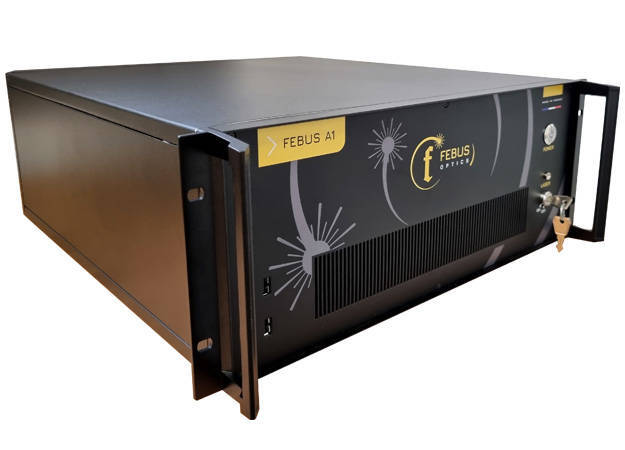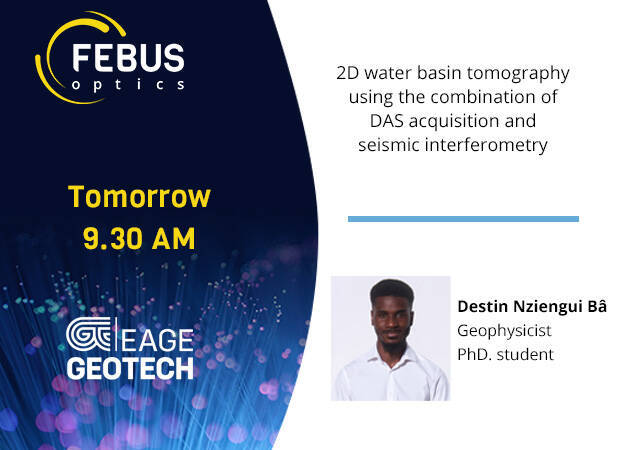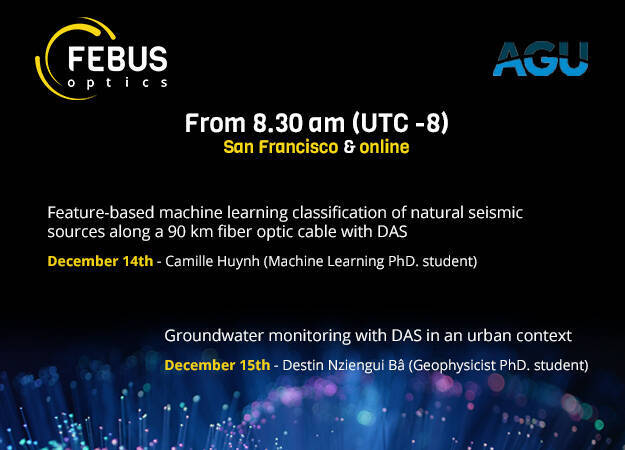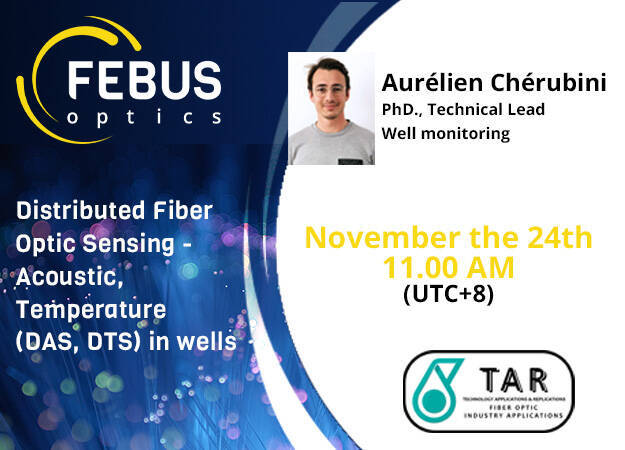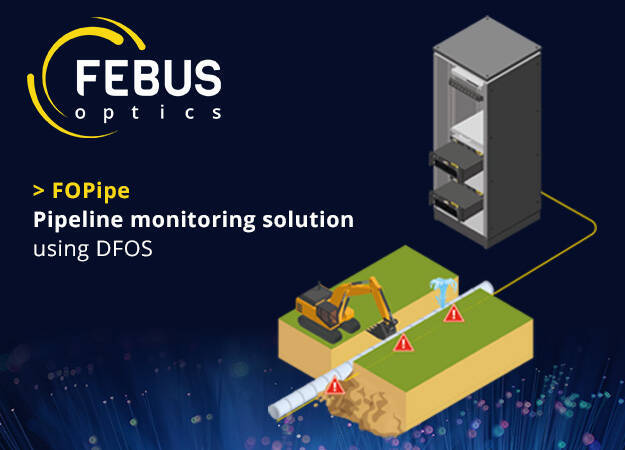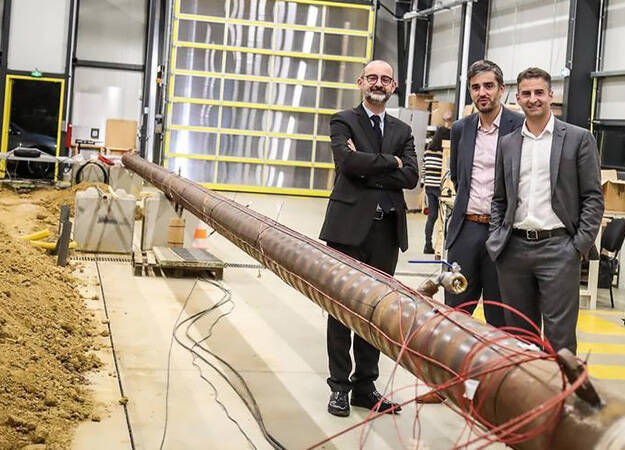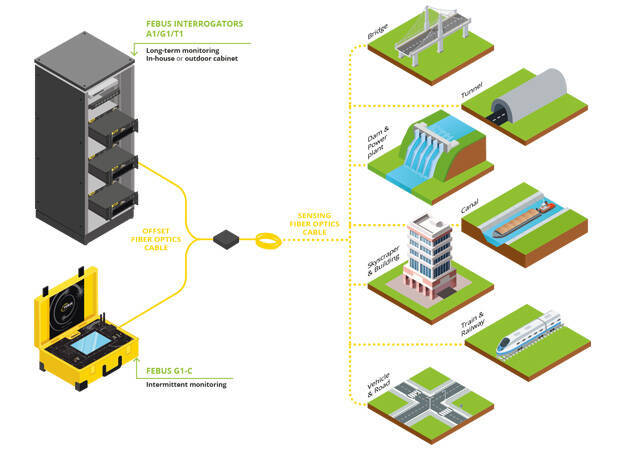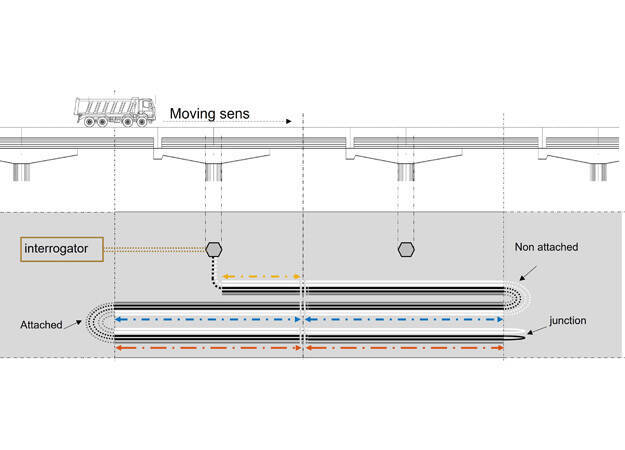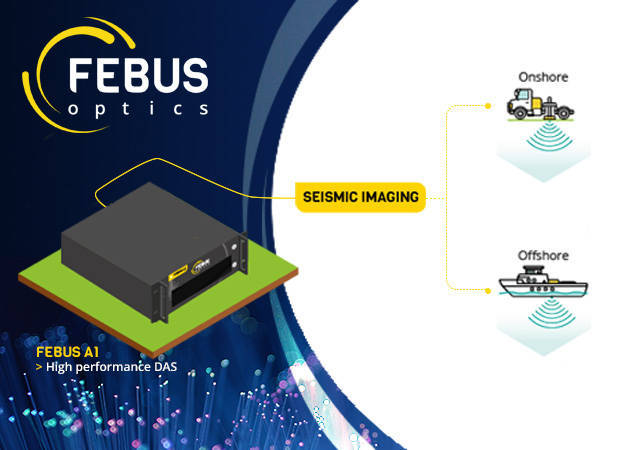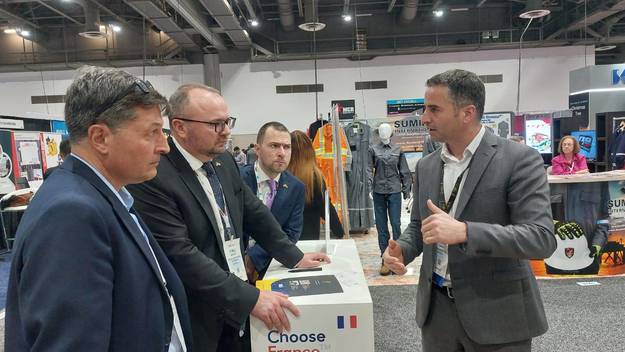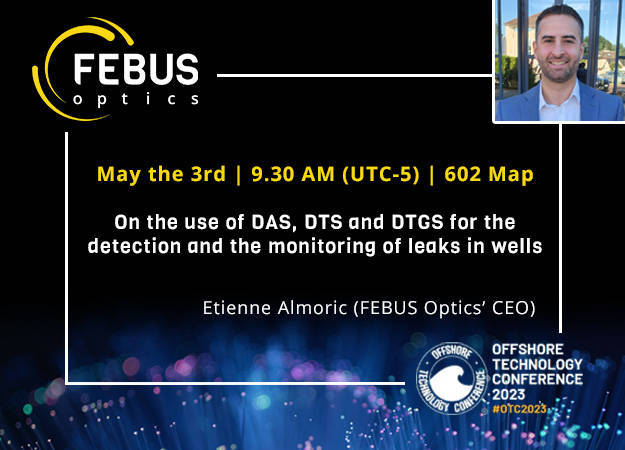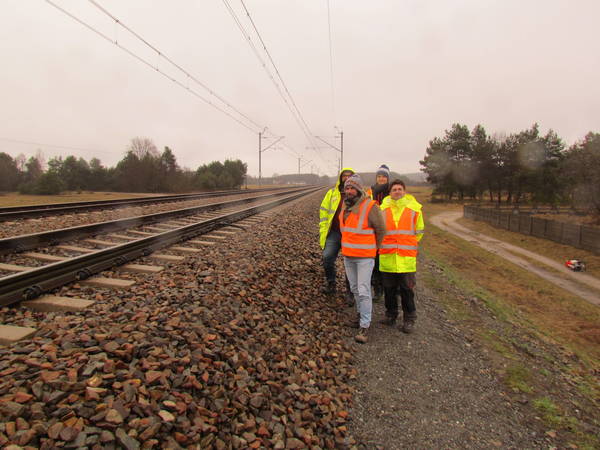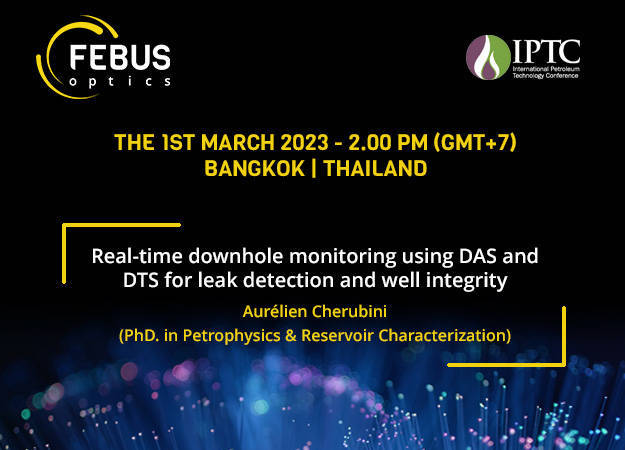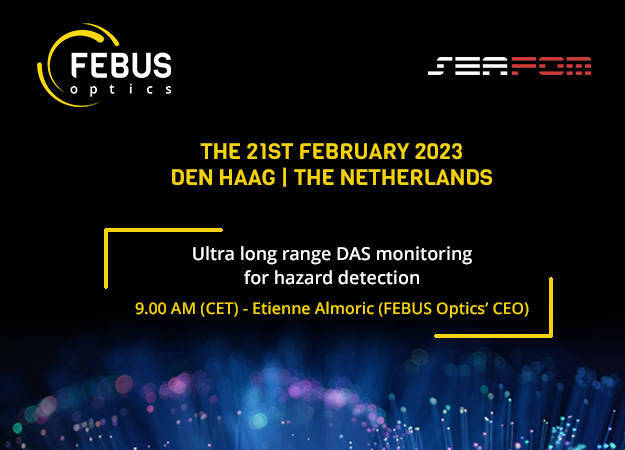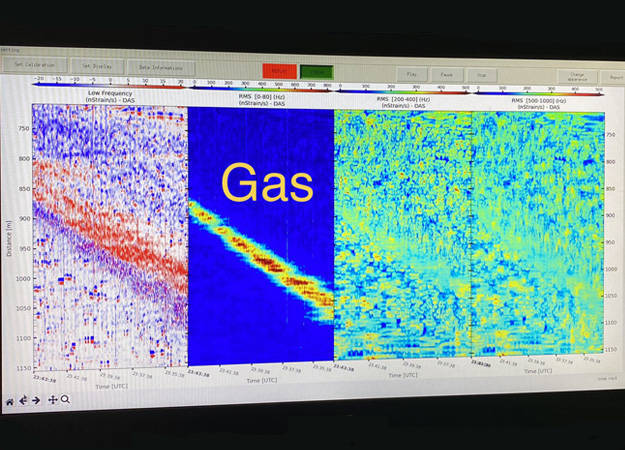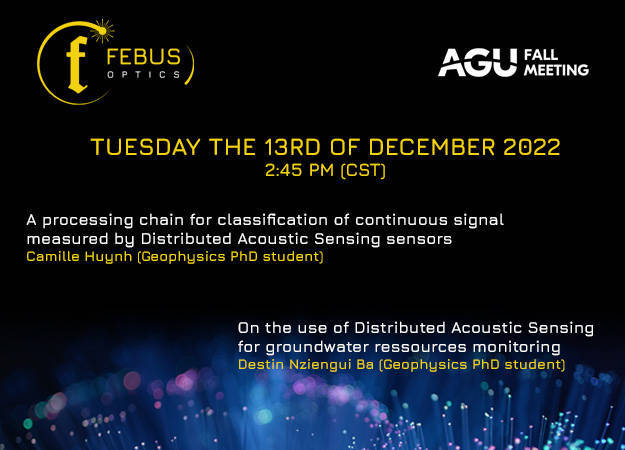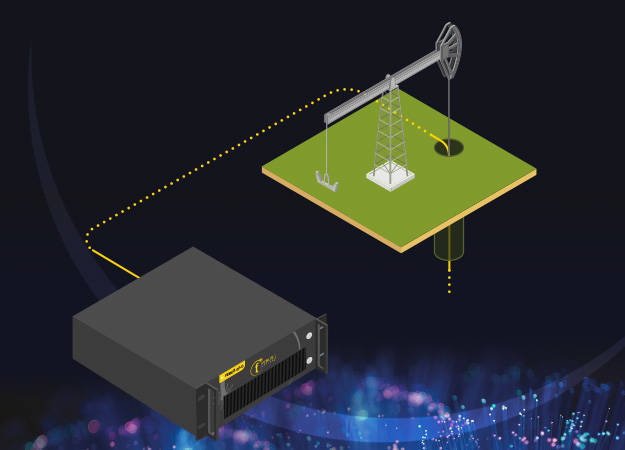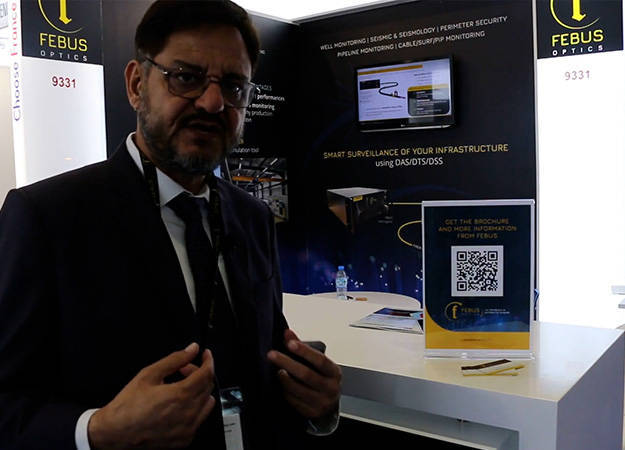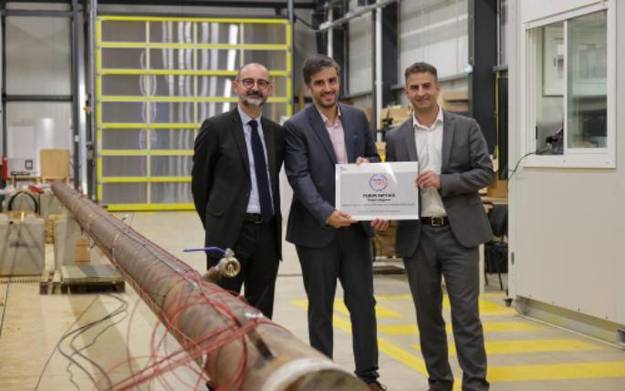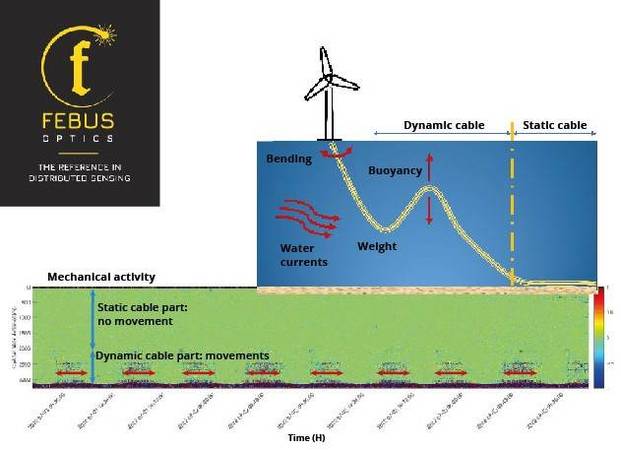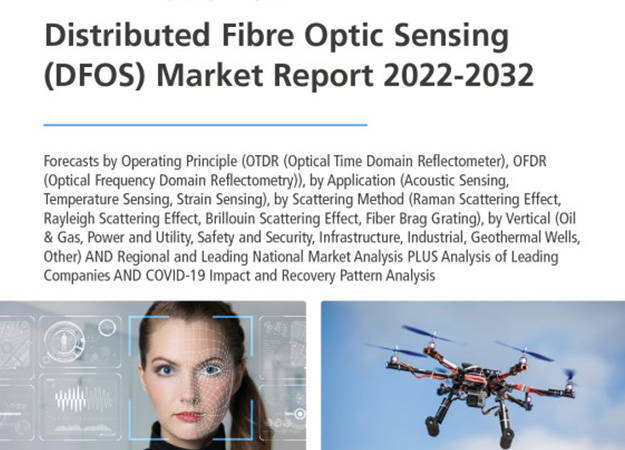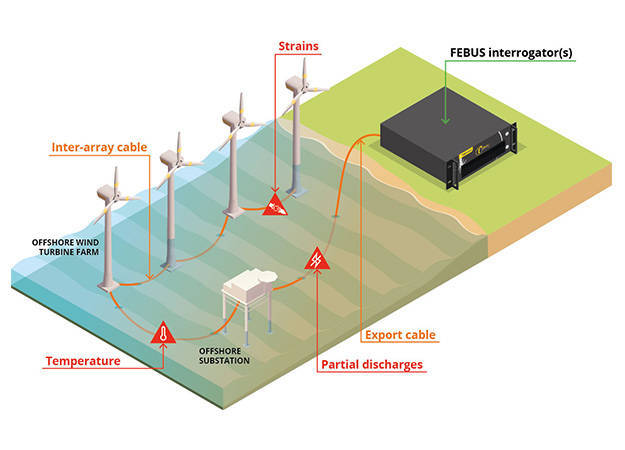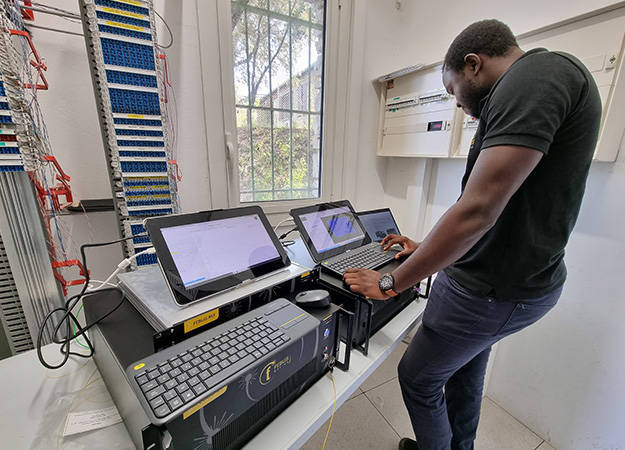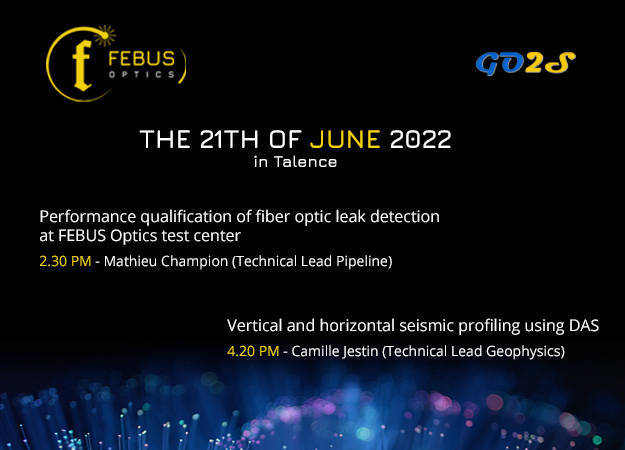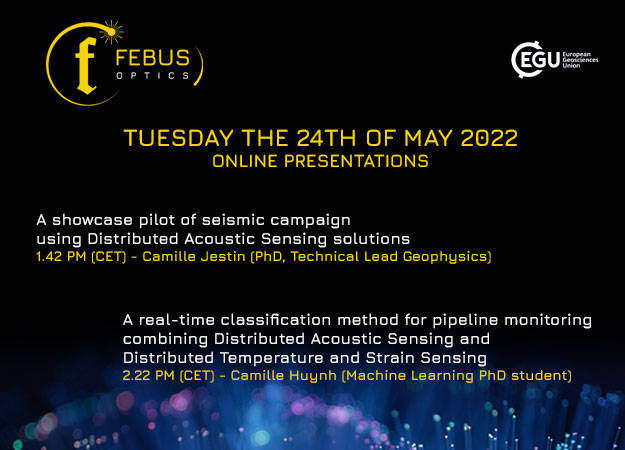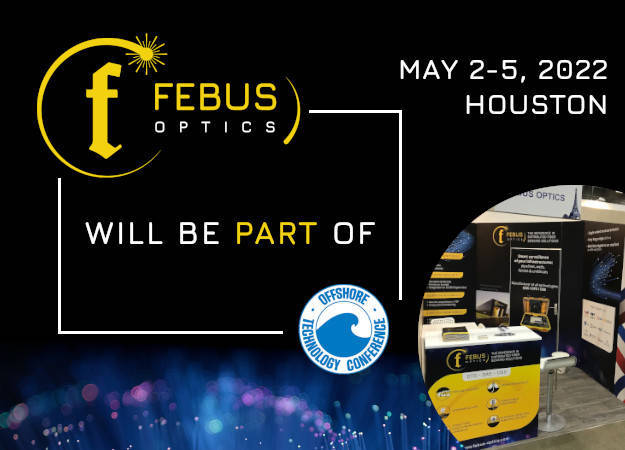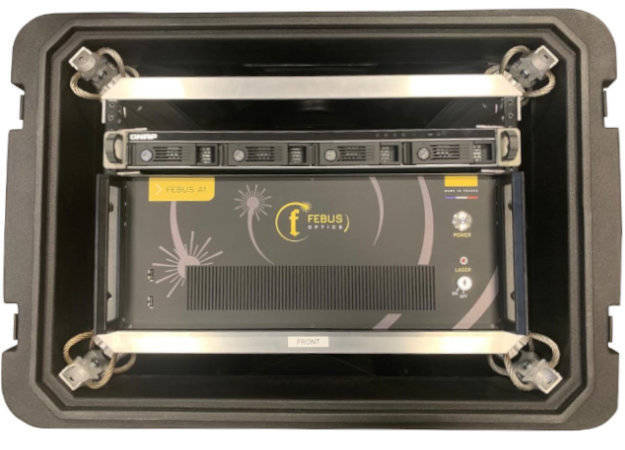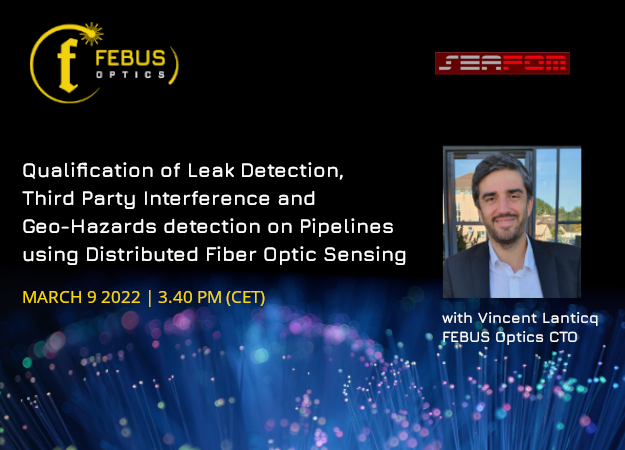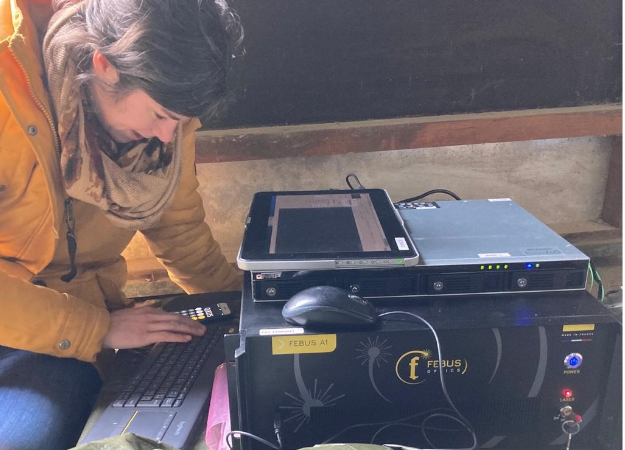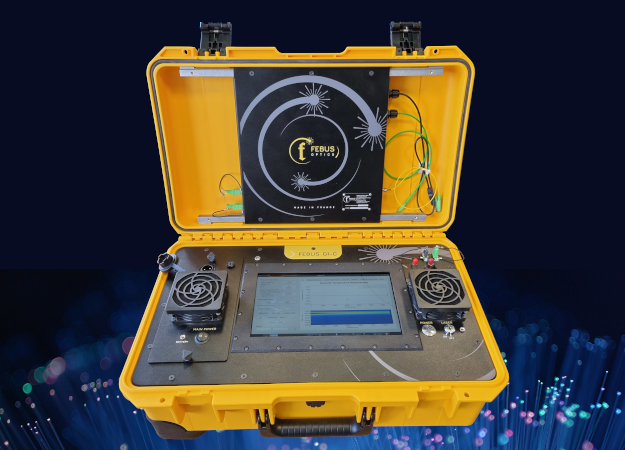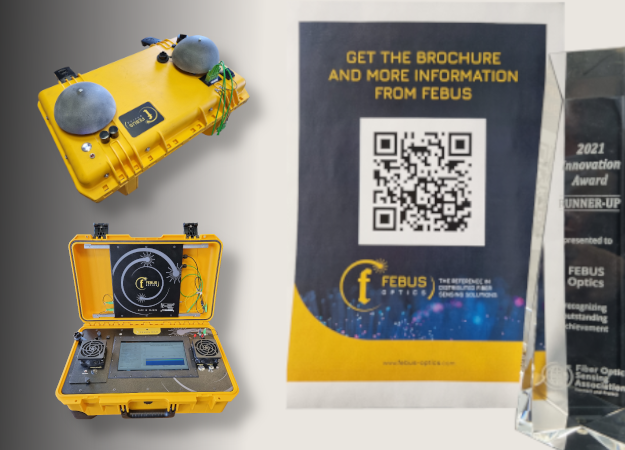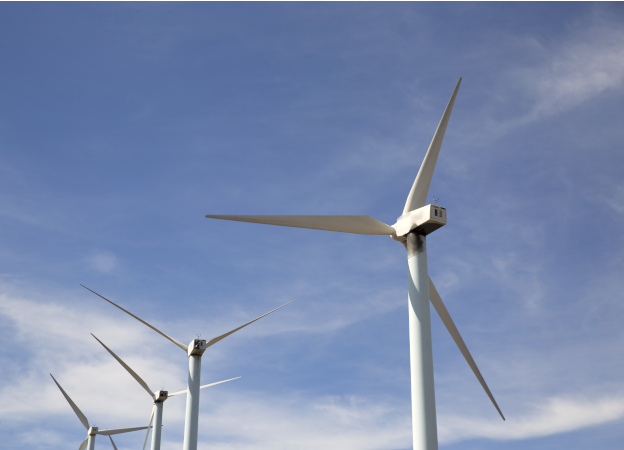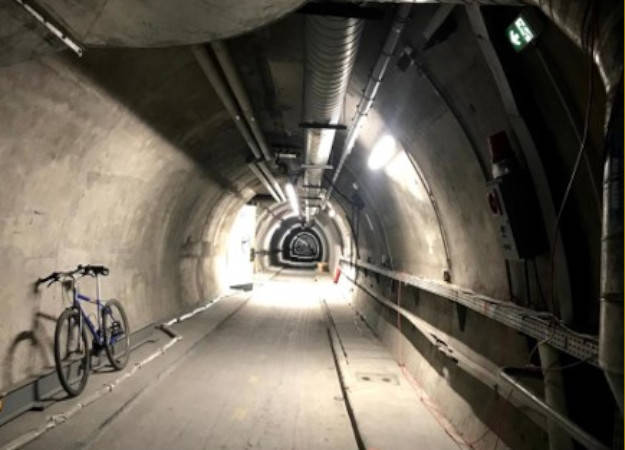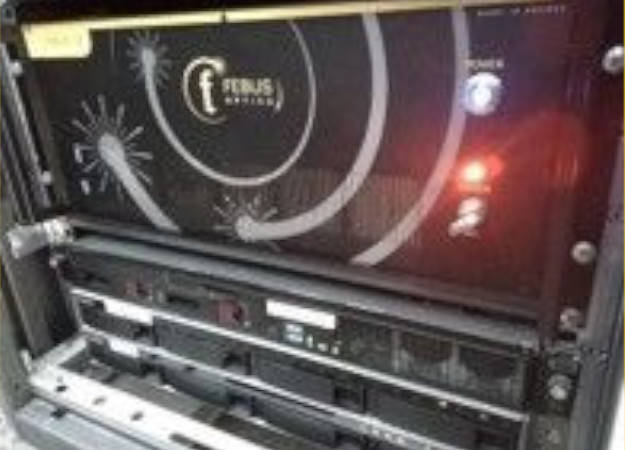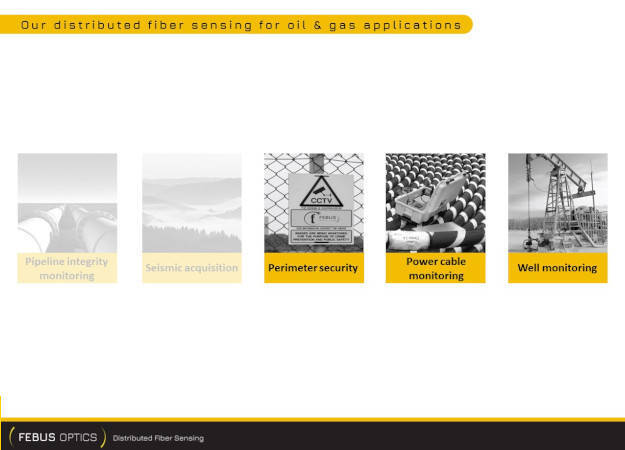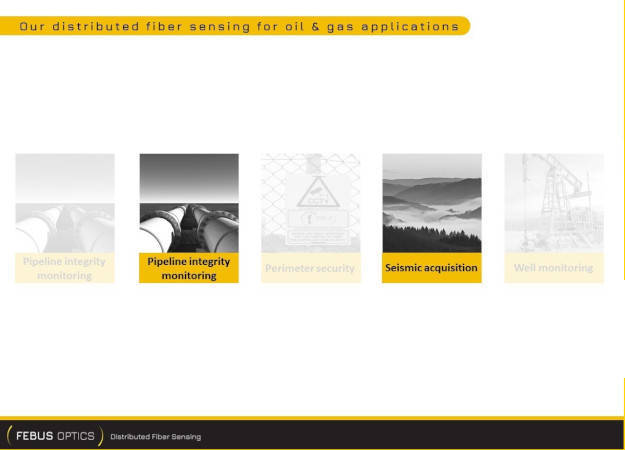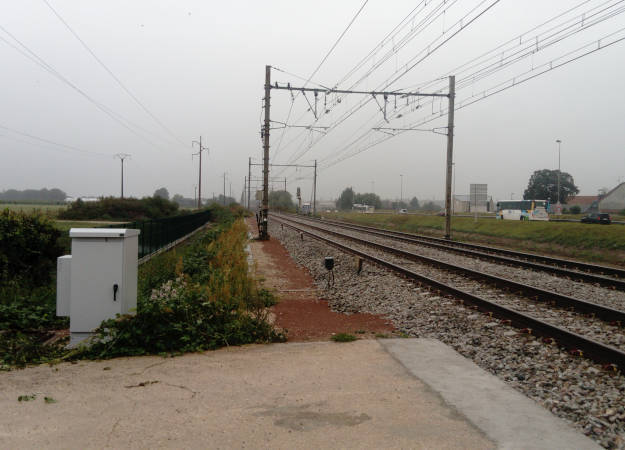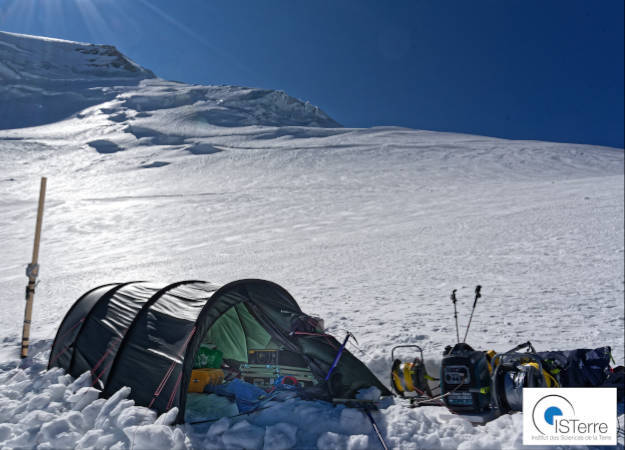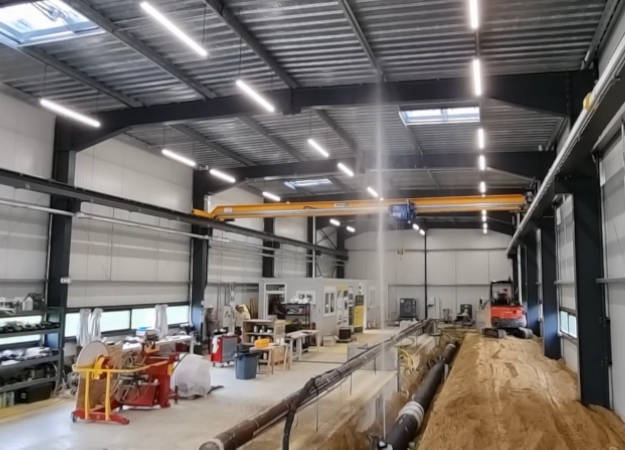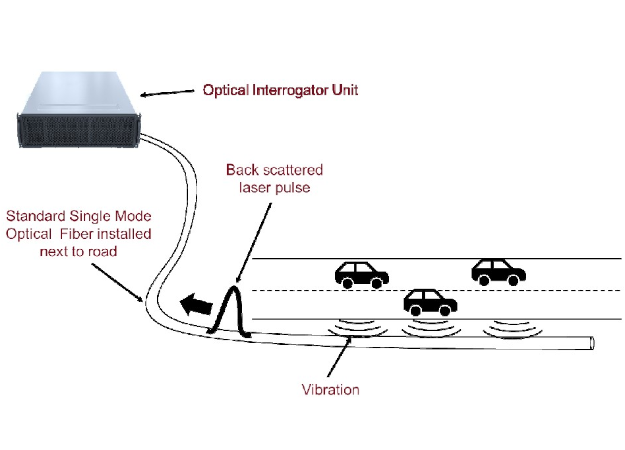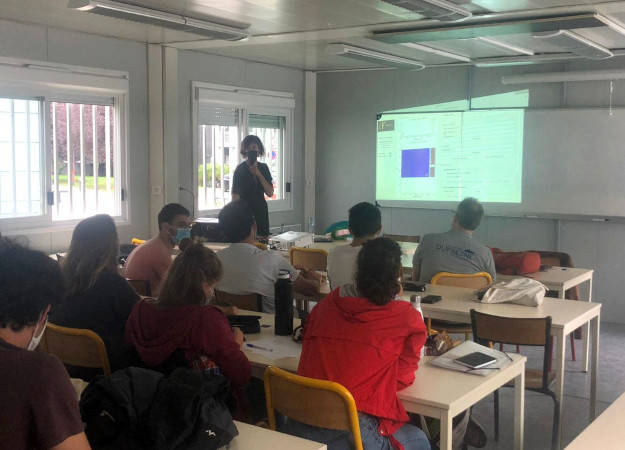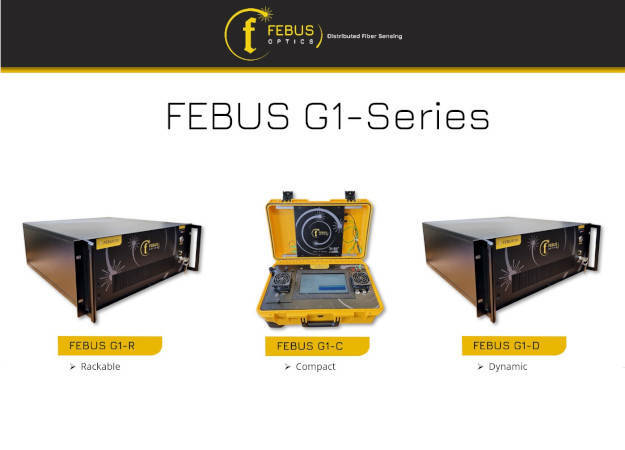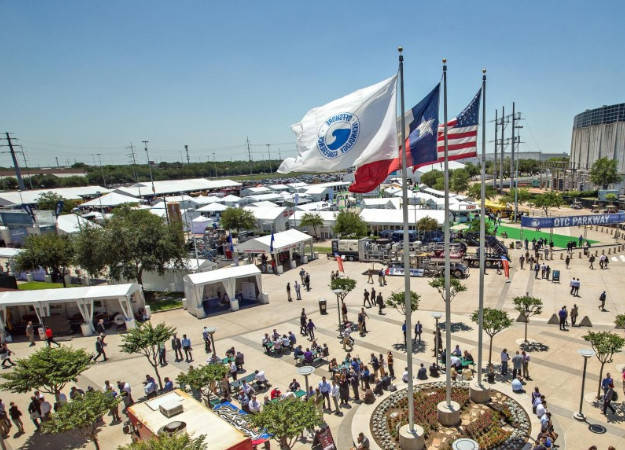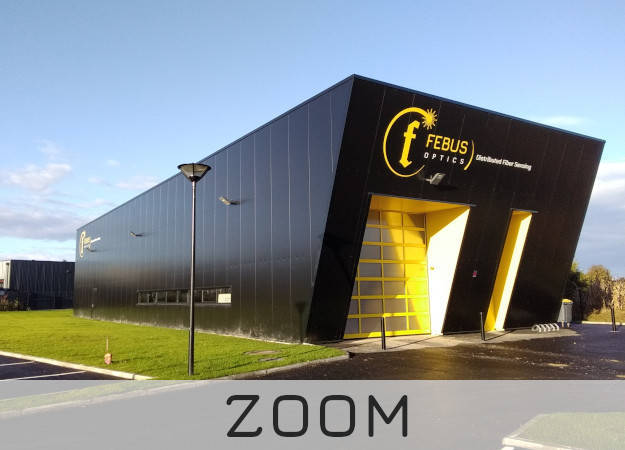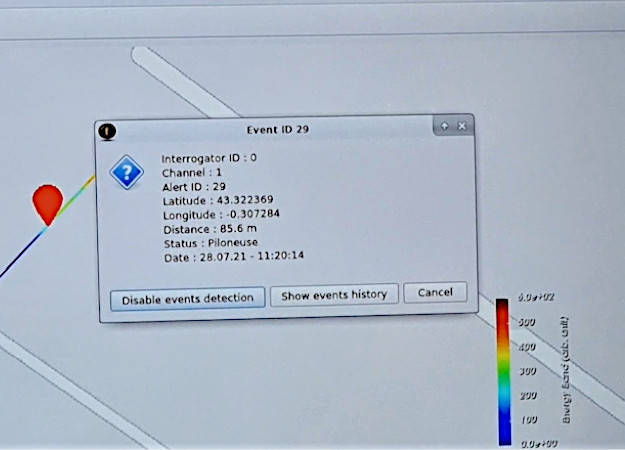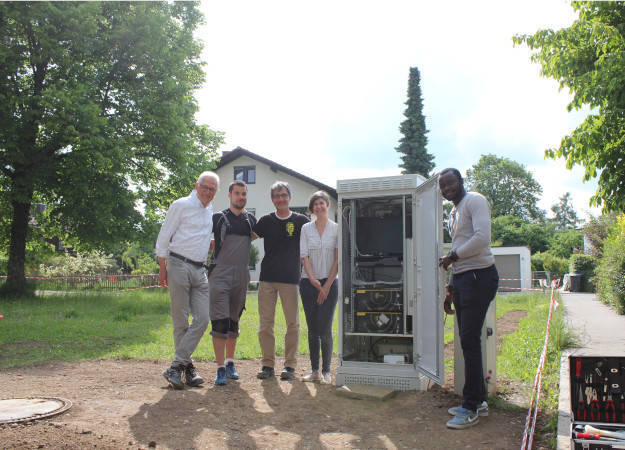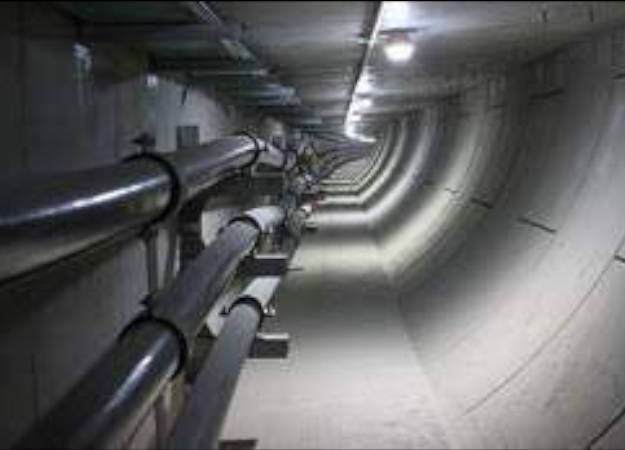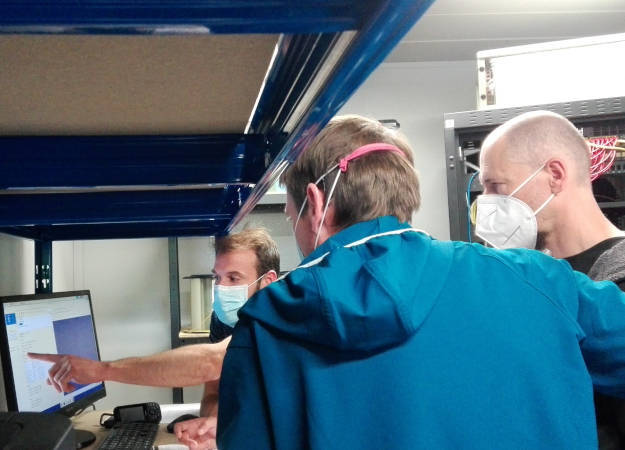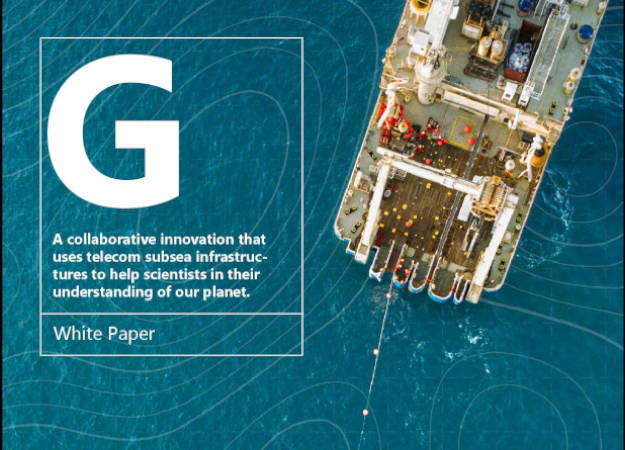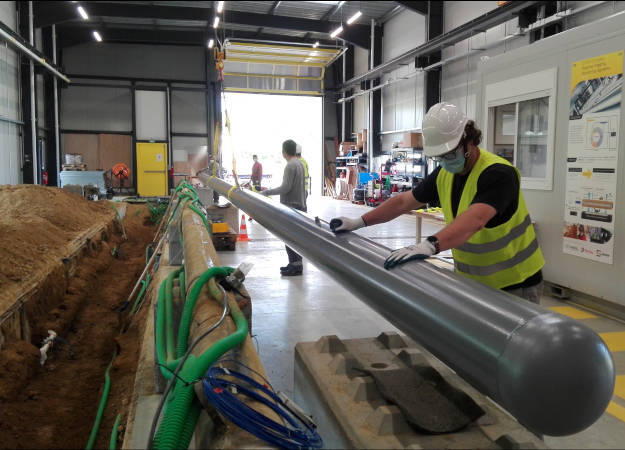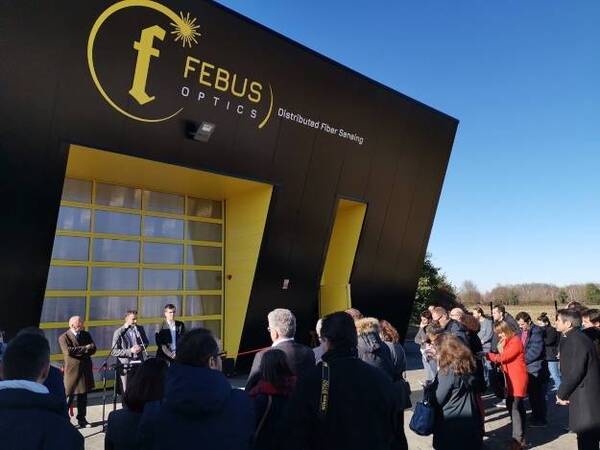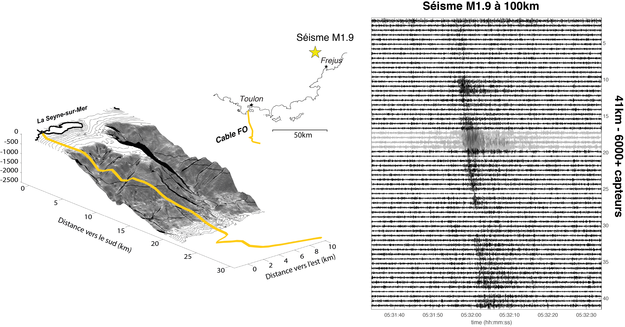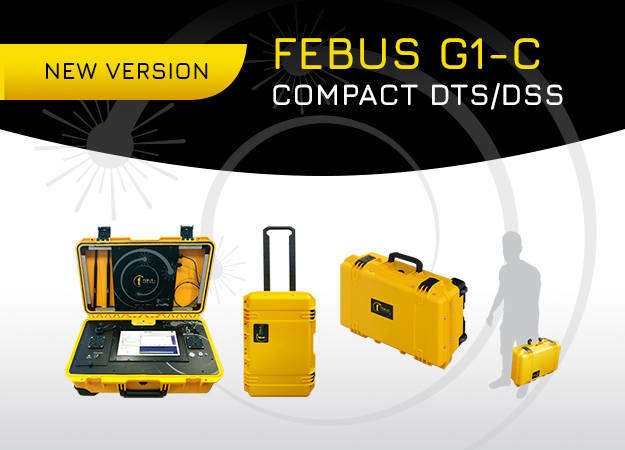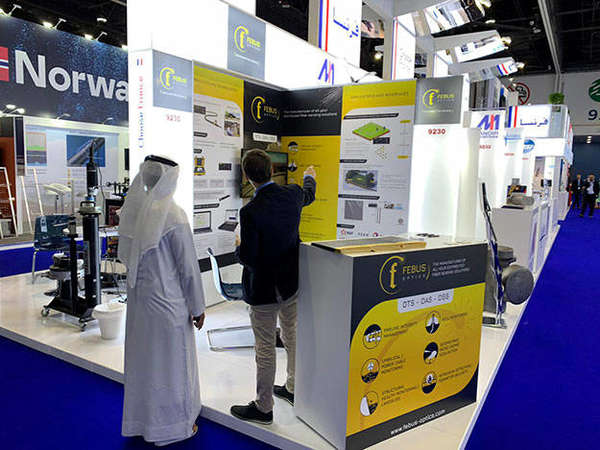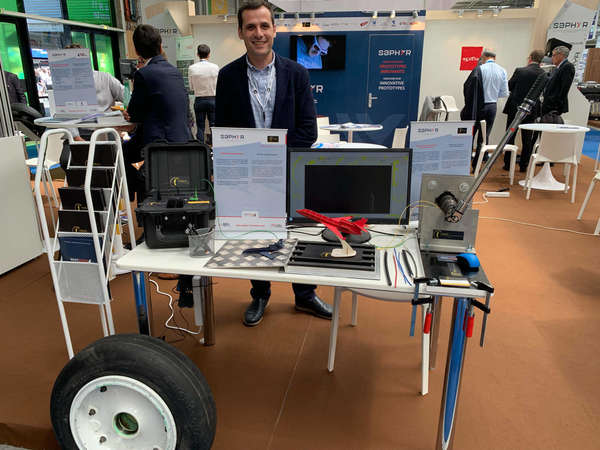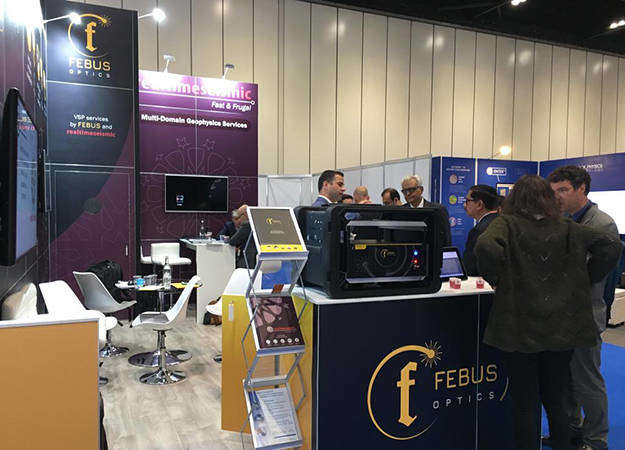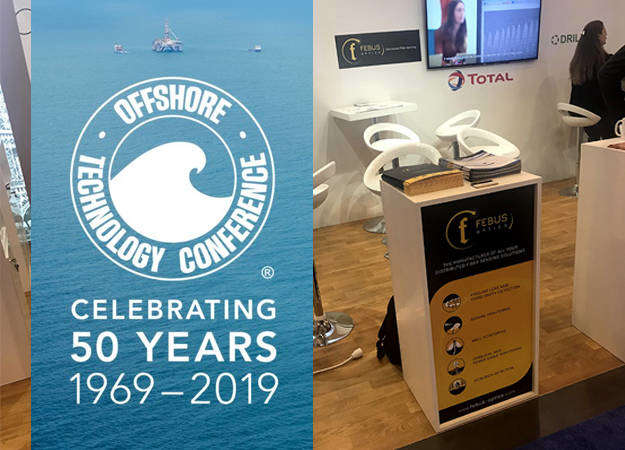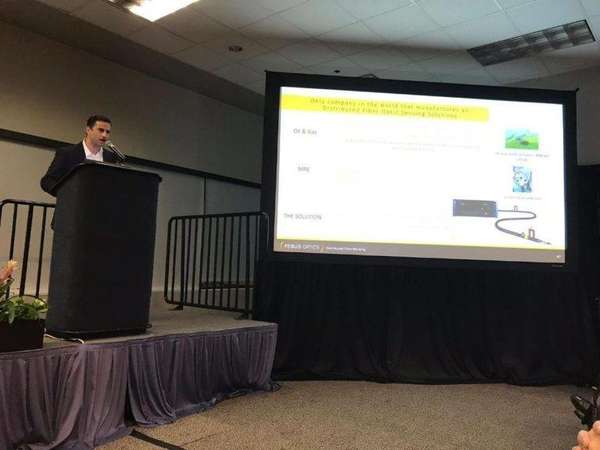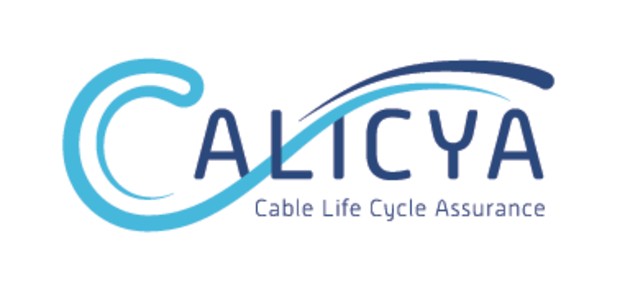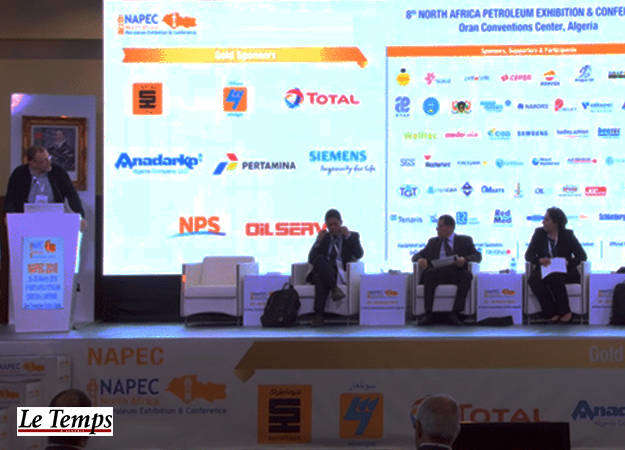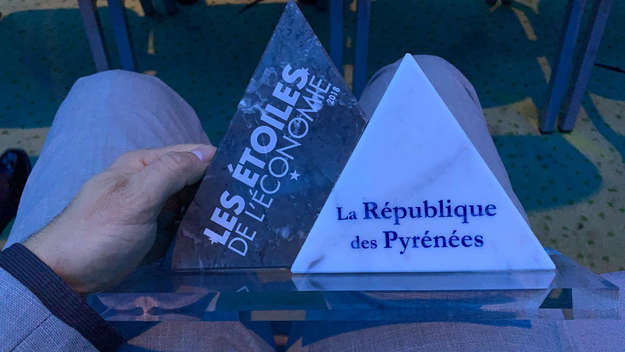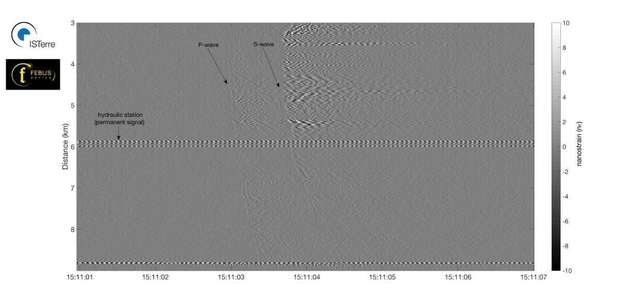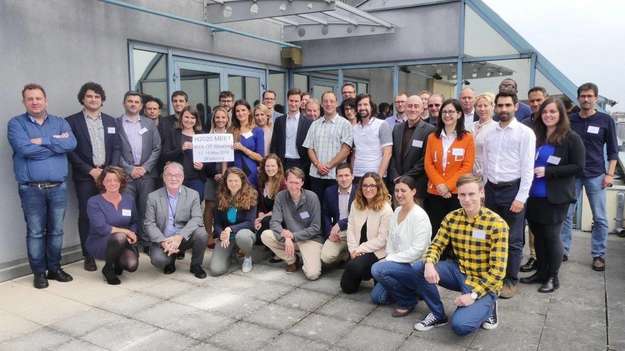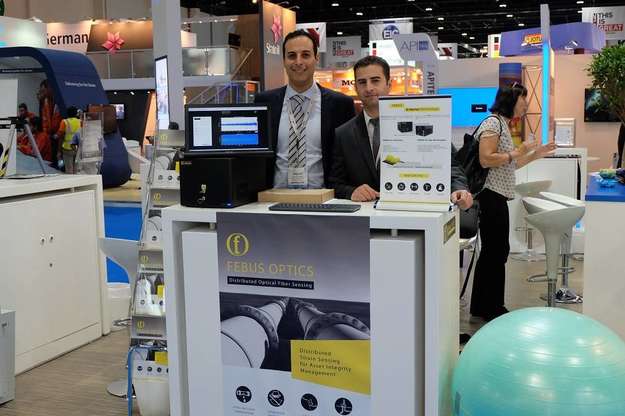Leak detection in wells: On the use of Distributed Temperature Gradient Sensing (DTGS) with DAS FEBUS A1
Overview
The aim of well integrity interventions using DFOS is to significantly reduce the duration and the cost of these operations, and to provide additional information in comparison to traditional logging tool. We performed all measurements using a wireline deployment and monitored the integrity of the well in real time with the FEBUS A1 in the control room of the wireline logging truck of the company PetroLS (Figure 1).
In addition to acoustic (high frequency DAS) and temperature (DTS) monitoring for leak detection, we propose to use DTGS (Distributed Temperature Gradient Sensing) with low frequency DAS (< 1 Hz) to monitor leaks on the completion tubing of a well. The main advantage of using DTGS with DAS is its sensitivity to small leaks, including the direction of propagation of the leak.
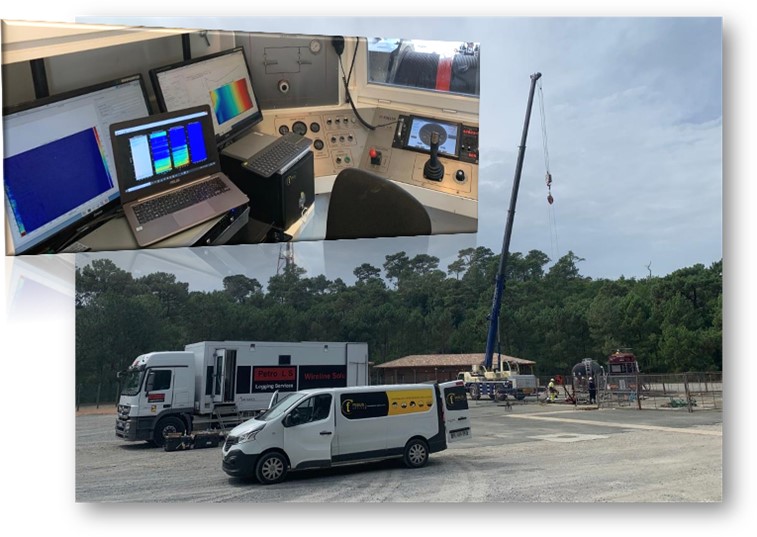 Figure 1. Logging unit including a wireline cable composed of both
Figure 1. Logging unit including a wireline cable composed of both
SM and MM optical fibers. The DAS FEBUS A1 and the DTS FEBUS T1-R
are located in the control room of the logging truck for interpretations
of data in real-time.
DAS accuracy for DTGS monitoring
We estimated the accuracy of our DAS for DTGS monitoring in the context of field operations. In this aim, we induced temperature variations in a well by injecting water in the production tubing at wellhead localization (Figure 2). With the DTS FEBUS T1-R we monitored the absolute temperature (Figure 2a) and DTGS (Figure 2b) of the injection phase, while we also monitored DTGS using DAS at low frequencies (Figure 2c). As the color bar is valid for both Figure 2b and Figure 2c, we can observe that the temperature gradient measured using the DAS is the same than those measured using DTS. However, the SNR using DAS is much better; we can monitor DTGS in the range of 10-3 K/s with DAS and 10-2 K/s using DTS.
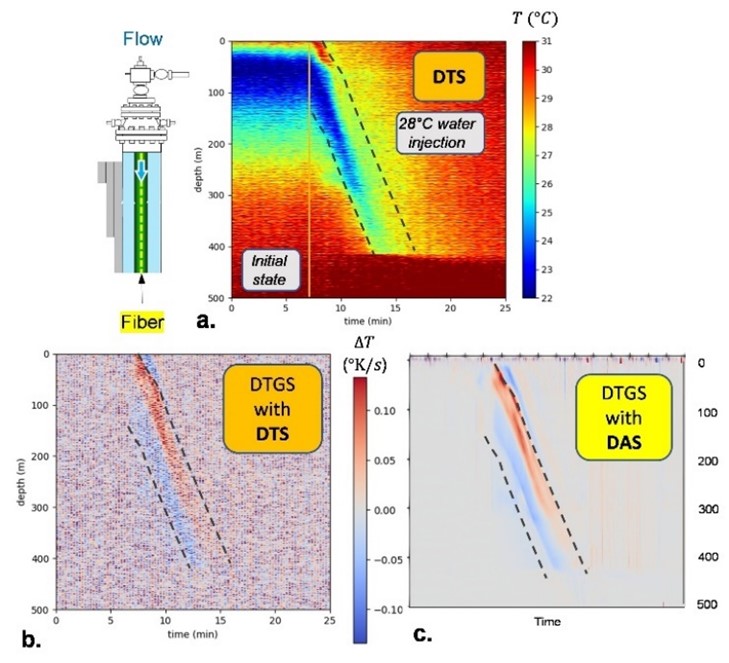 Figure 2. Monitoring of a) absolute temperature and b) temperature
Figure 2. Monitoring of a) absolute temperature and b) temperature
gradient using DTS FEBUS T1-R during the injection of water in a
production tubing, while c) the temperature gradient is also measured
at the same time using the DAS FEBUS A1.
Case Study
As we can monitor DTGS with a good accuracy using the DAS FEBUS A1, we proceeded to field operations to detect both gas (Figure 3) and liquid (Figure 4) leaks.
Gas leak
Regarding gas leak detection, a leak was simulated at 45m depth at a side pocket level (Figure 3). We mainly observe two phenomena as
1. non thermal effects, and
2. temperature effects coming from the side pocket area. In this case, we attribute the cooling effect observed in the Figure 3 to the diffusion of gas in water.
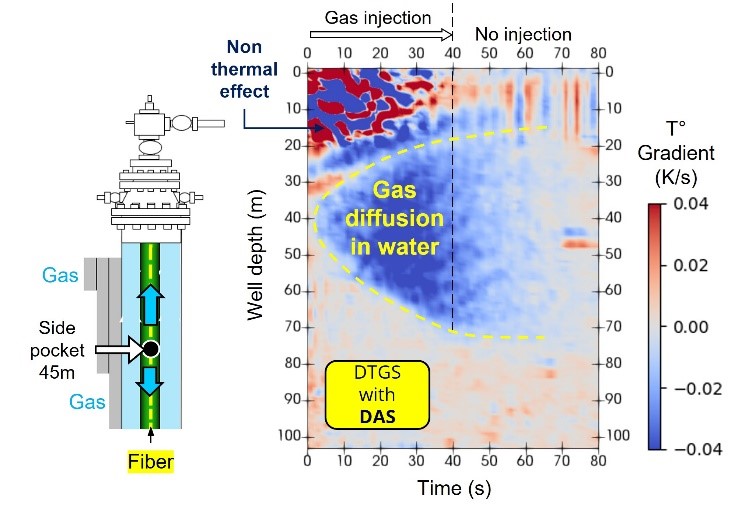 Figure 3. Monitoring of a gas leak on a well production
Figure 3. Monitoring of a gas leak on a well production
tubing using DTGS data from the DAS FEBUS A1.
Water leak
In the same way, we are able to detect minor liquid leaks on the production tubing, that can be induced by several environmental factors. In the case study presented in the Figure 4, the leak was not detected using traditionally non-distributed logging tools. In our case, we were able to detect it using both DTS FEBUS T1-R (Figure 4a) by observing the break in the temperature profile slope when pumps are off, and DAS FEBUS A1 (Figure 4b). The flow is induced by a rebalancing of the pressure between the annulus and the production tubing. The leak detection using DTGS with DAS FEBUS A1 (Figure 4b) allows to detect the leak in real time too, but also to estimate the speed (from the temperature front in the Figure 4b) and the direction of the leak-induced flow.
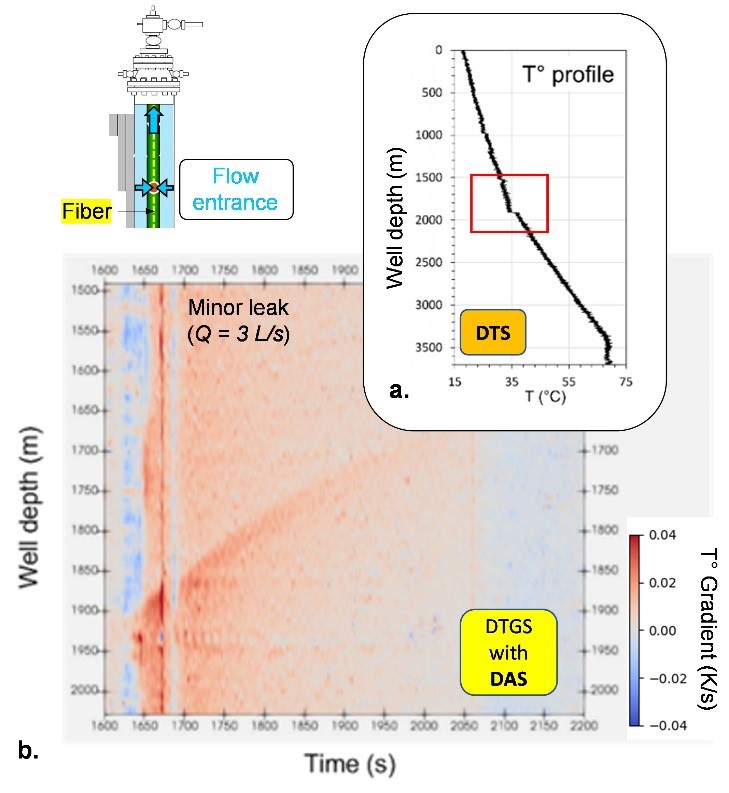 Figure 4. Monitoring of a) the absolute temperature profile in a well
Figure 4. Monitoring of a) the absolute temperature profile in a well
production tubing using DTS FEBUS T1-R and b) DTGS with DAS
FEBUS A1 to monitor a minor leak located on the tubing.
The flowrate of the leak is around 3 L/s.
Conclusion
To conclude, we obtained consistent DTGS data using the DAS technology at low frequencies in comparison to DTS technology in the context of field operations. The main advantage of the DTGS using DAS is due to the good SNR which allows to detect temperature events in the range of 10-3 K/s, enabling to detect gas or liquid leaks in well using a wireline deployment. The combination of DTGS with DAS and high frequency DAS (flow, tube vibrations) allows us to qualify and quantify leaks in wells simultaneously and in real time.

